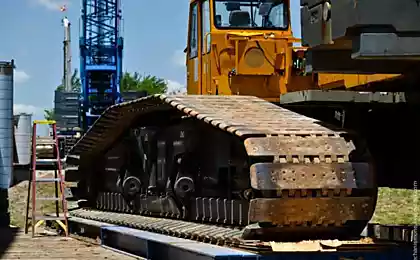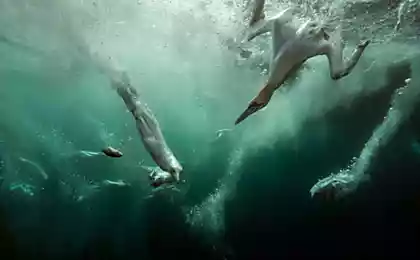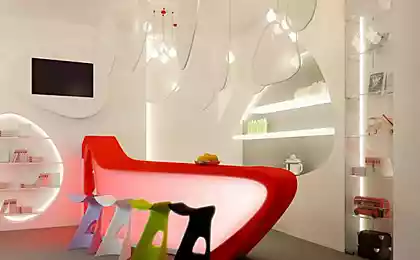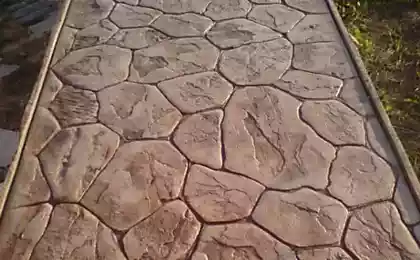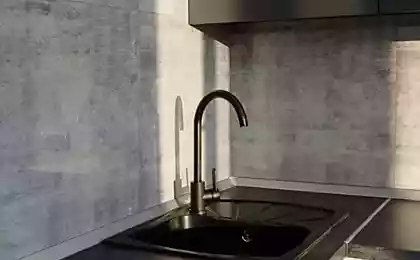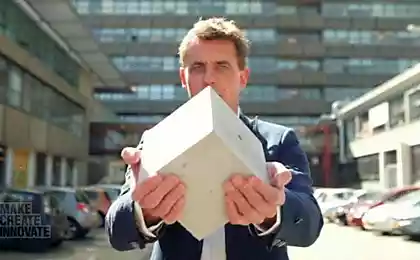1560
Concrete mirror of England (23 photos)
Take a look at the photo - what is seen in the distance? Station space communications? Missile defense? Or is it the ancient traces of aliens? The project, which we will tell you, has been launched for a long time and has an uncertain future. However, it is interesting, since combines the unknown pages of art, Napoleon, Count Zeppelin, a little art and a completely crazy idea.
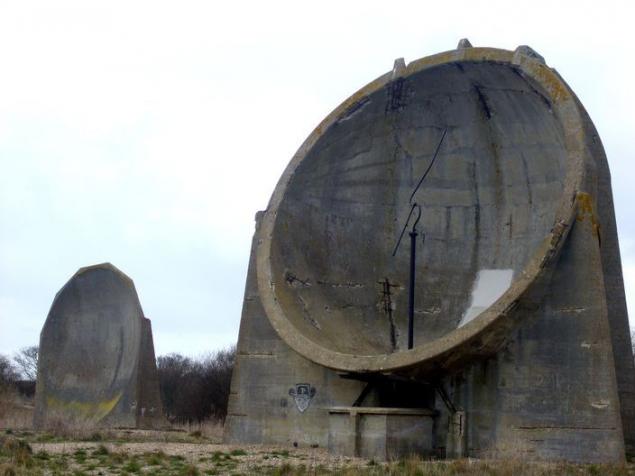
Several years ago, a British artist, Danish-born Liz Otodzhena (Lise Autogena) was traveling in his car along the coast of the English Channel. From a distance she saw a strange structure, standing on high ground. She was intrigued, and when they looked close - just fascinated. So can charm abandoned 50-70 years ago, the plant, a dam or a building, dilapidated building of a bygone era in which guessed grandeur and power. Huge concrete plates and bowls, converts the concave side toward the continent, as it turned out, were a "listening ears" or "Sound Mirrors".
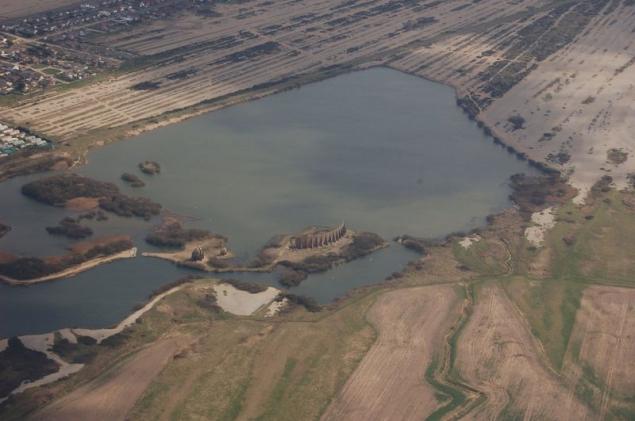
The original purpose of these buildings- to capture the sound of engines airship Zeppelin and German airplanes during WWI. Man standing on guard of the British palate, located at the focus of a mirror or in a special chamber beneath. In the latter case, the sound is transmitted into the - into the ears of the operator directly through the tube-like tube stethoscope, only a manifold increase in length.
In the twenties and thirties optimized process: focus placed microphone and transmit sound to the bunker under the "acoustic mirror" - could detect not only the aircraft, but the noise of the engines and vehicles. Mirrors were made (mostly) in the form of a giant (diameter up to 9, 1 meter) concrete bowls Chagall, converts the concave side towards the sea. But there were mirrors and a huge semi-circular (in plan) wall length of 60 meters and a height of five meters.
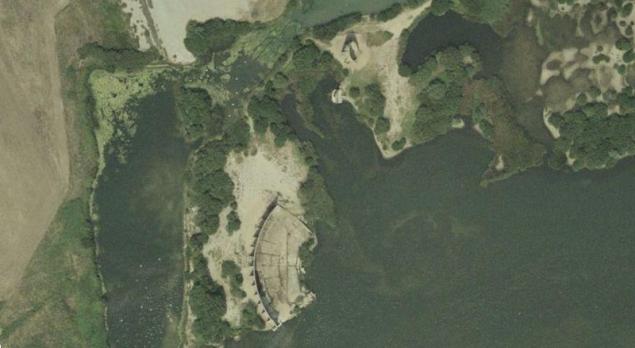
Such structures were built from 1916 to 1930 more than a dozen sites on the east and south-east coast of Albion. "The ears of Britain." No more no less. And after the First World War they worked. And later - too. They have lost their relevance only in the course of the Second World War, with the practical development of the radar (the pioneers here, by the way, were just the United Kingdom, as well as - the USSR).
A lot of them - are built along the coast of Kent, in Sunderland, Kilnsey, Bowlby and so on. In the interwar period, the British built Mirrors even in Malta. All this combined with a very conventional acoustic locator:
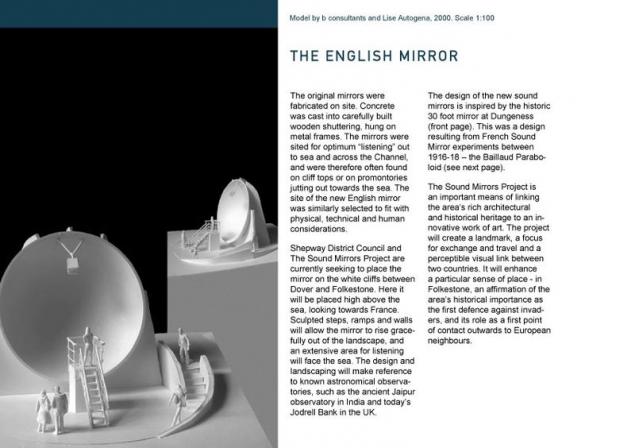
By 1940, these gizmos finally obsolete - was invented radar - but its role in the Battle of Britain played: acoustic warning system along the banks served more than 1,000 people from the Royal Air Force.
We also add that in sonar enemy planes during World War II were successfully used and traps much smaller - metal bells which are steered in all directions on a special bracket. However, these devices are familiar to fans of technology is much better than the huge sound mirrors the English Channel coast.
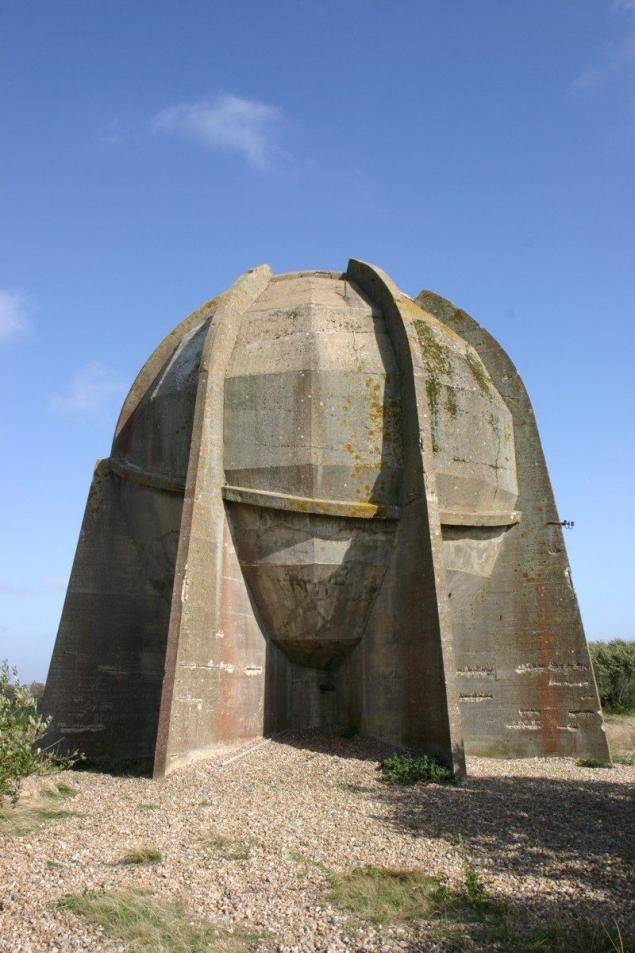
These mirrors were performed essentially as giant (diameter up to 9, 1 meter) of concrete bowls converts concave side towards the sea. But there were mirrors and a huge semi-circular (in plan) wall length of 60 meters and a height of a few human growth.

Surprised scope of these mirrors, Liz conceived to turn them into something entirely peaceful.
Thus was born the project "Sound Mirrors".
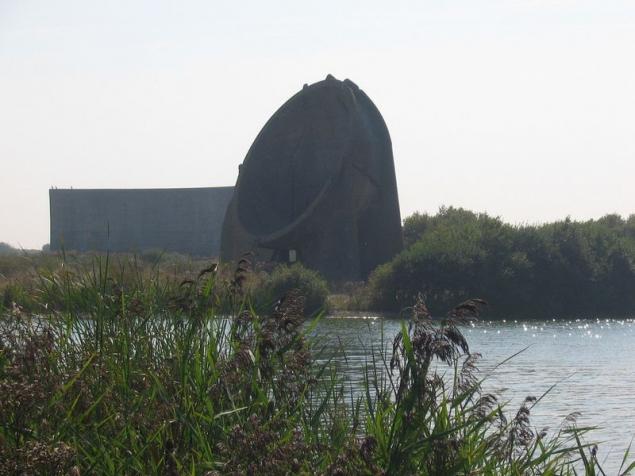
In 1930, the military has also decided to build a massive sonic mirror in a 60-meter-high wall. This structure has allowed more accurately hear the plane, located about 10 km away (in good weather), with the naked ear. And if the operator more and use the microphone, the range reaches up to 32 kilometers.
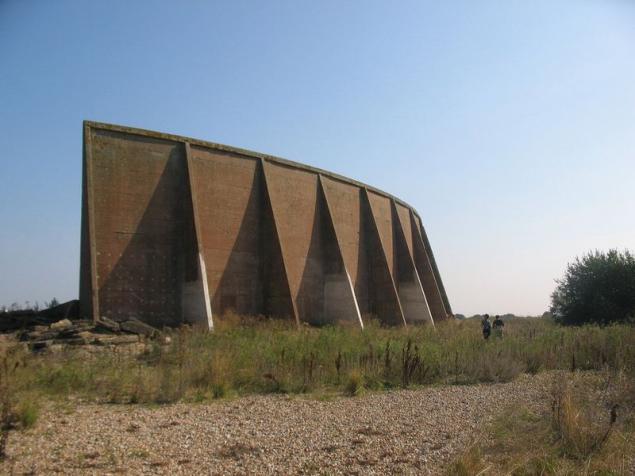
The original plan was to put a mirror-wall along the coast, every 40 km and a pair of small mirrors between them. But in the 30 years we have proliferated the first radar and planes have become so fast that the sound the mirror could not provide reliable early warning of approaching danger. Military abandoned the idea, leaving the buildings, many of which still rise along the southeastern coast of the UK.
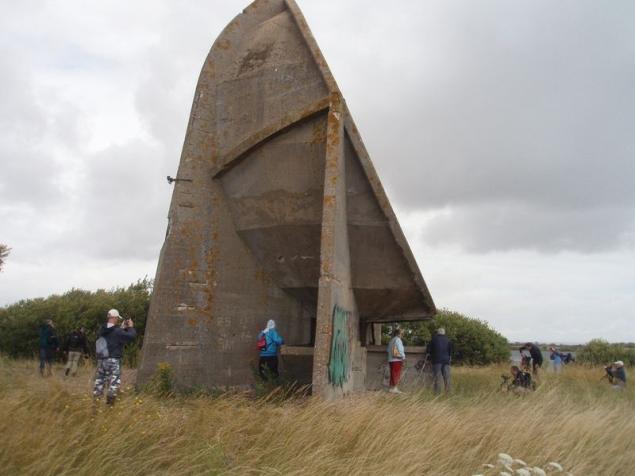
The artist decided to build a modern copy of the "ears of Britain" with a completely different purpose. According to the plan, Liz, two such bowls should be installed in the English and French sides of the Strait to the people of the two countries could talk, standing in their focus. I remember the bike since the Soviet Union, it seems from Mikhail Zadornov. Director in the office yelling into the phone: "It Tyumen? !!! This Tyumen? !!! You hear?!!! This Tyumen? !! ". Foreigner waiting in a nearby waiting room, puzzled asks his secretary: "What phone call could not?".
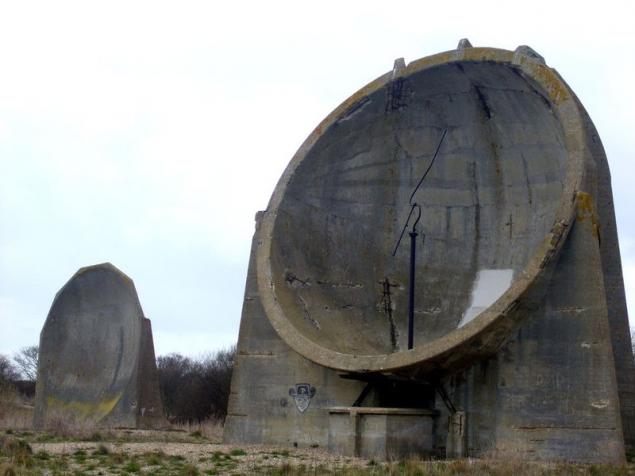
So here. Hardly even with large mirrors can shout across the English Channel. This conversation will be a bit illusory. In fact, there will not do without the intervention of modern transmission technology. But it is curious that in the heart of the installation will be the concrete acoustic mirror.
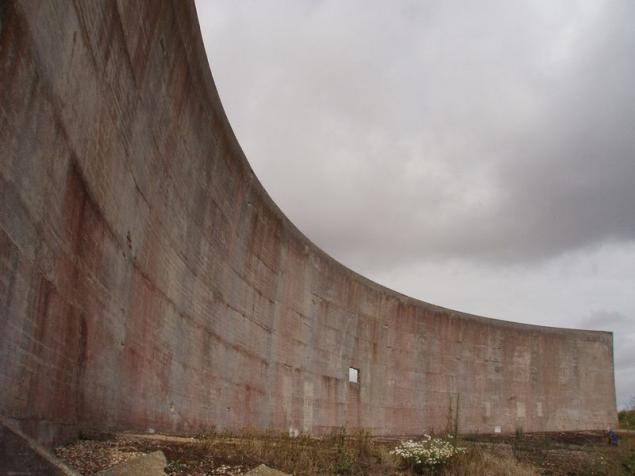
It will really gather in their focus to strengthen and, like sink, the distant sound of the sea and wind, and electronics will add his voice real interlocutor from the other side of the Channel. Tourists who wish to speak will have to get up in front of a mirror on a special platform. And promised the illusion of a close presence of the speaker on the other side, due to the stereoscopic sound transmission.
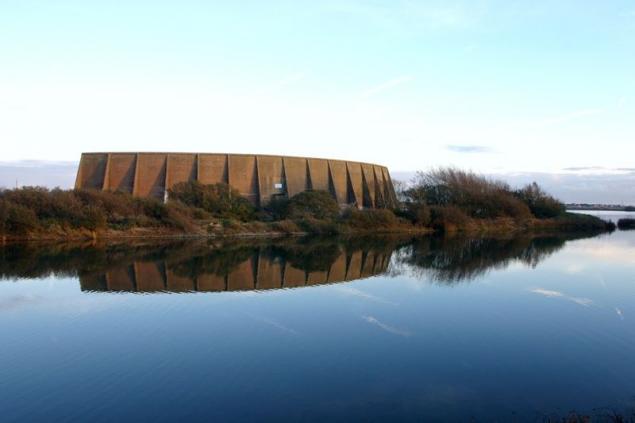
The size (about 6-7 meters) and form new mirrors are known to repeat such historical bowls that are near Cape Danzhenes (photo under the headline), although there is the big mirror has, as we have said, 9, 1 meter in diameter .

The mirrors on the two banks of the channel will be split about 40-45 kilometers.
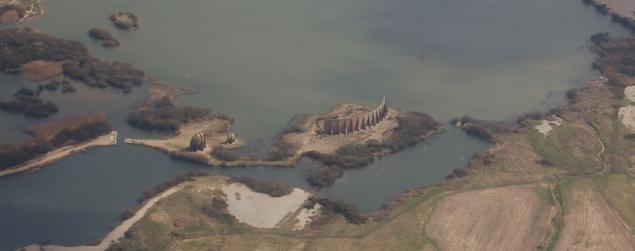
Around each building should be erected mini-parks with a variety of stone or concrete structures, stairways, walkways, observation deck, and the like. In general - the harmonious unity of nature and architecture, a magnet for tourists, just - resting place of the locals.
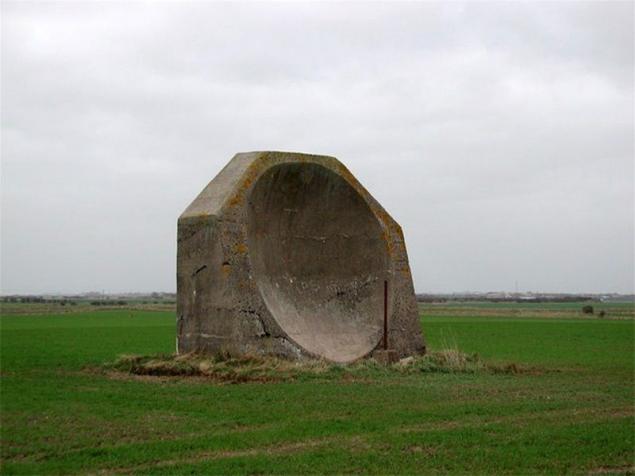
Liz many years raising money for the project, but judging by his website, the date of implementation can not say anything. But within the framework of the same old sound mirror became the object of new studies. And visual aids for students. Back in 2003, Liz, along with school teachers and artists, not just the children brought here not only to look at the amazing monuments of military equipment early XX century, but a number of them hold a fun acoustic experiments.
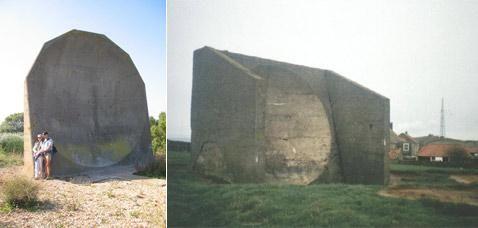
Let's return, however, to the project. The first of the new mirror twins should take place somewhere between Dover and Folkestone (according to some, quite close to the city), and the second - about the French Sungate. Curiously, this city originates a tunnel under the English Channel. No, not modern, but the one that dug in the 1880s. Yes, even then people tried to connect the mainland with the island kingdom. And this tunnel project was proposed much earlier - showed Napoleon the First Plan. However, for various reasons, building construction began only towards the end of the century.
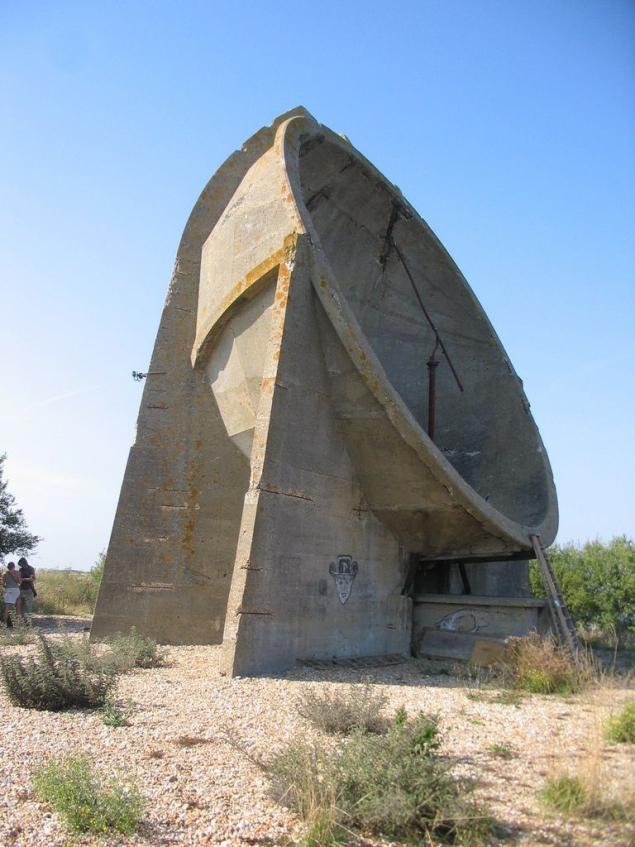
The project was not so primitive. Then we think about the ventilation of the leakage water. For political (and, perhaps, and financial) reasons, construction was interrupted. But the tunnel had yet to go deep for several kilometers at the bottom of the Strait. By the way, the tunnel still exists.
As you can see, the choice of location for the mirror in France is interesting cultural and historical associations. And the area of Dover and Folkestone no less significant. Depending on what period of history you look, and it was the first British achievements in the way of the invaders from the continent, and the first gate for trade and general - friends from the same continent. That Sound Mirrors Liz Otodzheny - a real reminder of the inextricable link with the rest of Europe the British.
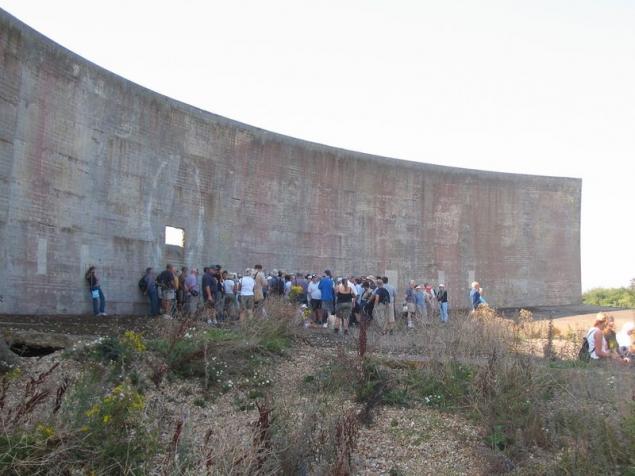
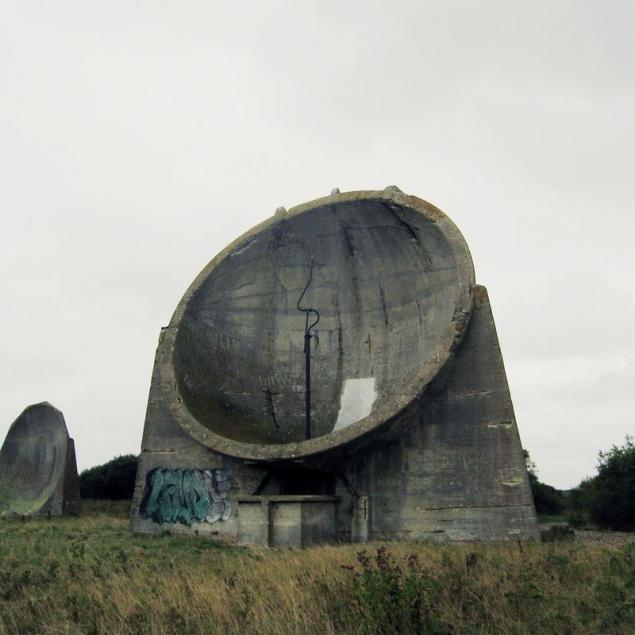
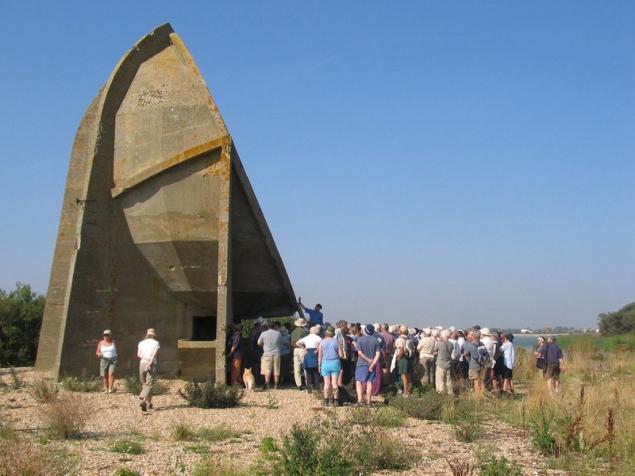
And once these mirrors were defensive. By the way, here you can see how listening to using the mirrors, like being in front of them, and under construction. Right at the top - a small sound locators, widely spread not only in England
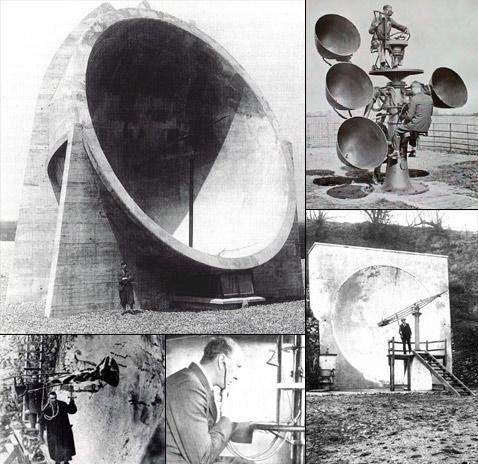


Source: masterok.livejournal.com

Several years ago, a British artist, Danish-born Liz Otodzhena (Lise Autogena) was traveling in his car along the coast of the English Channel. From a distance she saw a strange structure, standing on high ground. She was intrigued, and when they looked close - just fascinated. So can charm abandoned 50-70 years ago, the plant, a dam or a building, dilapidated building of a bygone era in which guessed grandeur and power. Huge concrete plates and bowls, converts the concave side toward the continent, as it turned out, were a "listening ears" or "Sound Mirrors".

The original purpose of these buildings- to capture the sound of engines airship Zeppelin and German airplanes during WWI. Man standing on guard of the British palate, located at the focus of a mirror or in a special chamber beneath. In the latter case, the sound is transmitted into the - into the ears of the operator directly through the tube-like tube stethoscope, only a manifold increase in length.
In the twenties and thirties optimized process: focus placed microphone and transmit sound to the bunker under the "acoustic mirror" - could detect not only the aircraft, but the noise of the engines and vehicles. Mirrors were made (mostly) in the form of a giant (diameter up to 9, 1 meter) concrete bowls Chagall, converts the concave side towards the sea. But there were mirrors and a huge semi-circular (in plan) wall length of 60 meters and a height of five meters.

Such structures were built from 1916 to 1930 more than a dozen sites on the east and south-east coast of Albion. "The ears of Britain." No more no less. And after the First World War they worked. And later - too. They have lost their relevance only in the course of the Second World War, with the practical development of the radar (the pioneers here, by the way, were just the United Kingdom, as well as - the USSR).
A lot of them - are built along the coast of Kent, in Sunderland, Kilnsey, Bowlby and so on. In the interwar period, the British built Mirrors even in Malta. All this combined with a very conventional acoustic locator:

By 1940, these gizmos finally obsolete - was invented radar - but its role in the Battle of Britain played: acoustic warning system along the banks served more than 1,000 people from the Royal Air Force.
We also add that in sonar enemy planes during World War II were successfully used and traps much smaller - metal bells which are steered in all directions on a special bracket. However, these devices are familiar to fans of technology is much better than the huge sound mirrors the English Channel coast.

These mirrors were performed essentially as giant (diameter up to 9, 1 meter) of concrete bowls converts concave side towards the sea. But there were mirrors and a huge semi-circular (in plan) wall length of 60 meters and a height of a few human growth.

Surprised scope of these mirrors, Liz conceived to turn them into something entirely peaceful.
Thus was born the project "Sound Mirrors".

In 1930, the military has also decided to build a massive sonic mirror in a 60-meter-high wall. This structure has allowed more accurately hear the plane, located about 10 km away (in good weather), with the naked ear. And if the operator more and use the microphone, the range reaches up to 32 kilometers.

The original plan was to put a mirror-wall along the coast, every 40 km and a pair of small mirrors between them. But in the 30 years we have proliferated the first radar and planes have become so fast that the sound the mirror could not provide reliable early warning of approaching danger. Military abandoned the idea, leaving the buildings, many of which still rise along the southeastern coast of the UK.

The artist decided to build a modern copy of the "ears of Britain" with a completely different purpose. According to the plan, Liz, two such bowls should be installed in the English and French sides of the Strait to the people of the two countries could talk, standing in their focus. I remember the bike since the Soviet Union, it seems from Mikhail Zadornov. Director in the office yelling into the phone: "It Tyumen? !!! This Tyumen? !!! You hear?!!! This Tyumen? !! ". Foreigner waiting in a nearby waiting room, puzzled asks his secretary: "What phone call could not?".

So here. Hardly even with large mirrors can shout across the English Channel. This conversation will be a bit illusory. In fact, there will not do without the intervention of modern transmission technology. But it is curious that in the heart of the installation will be the concrete acoustic mirror.

It will really gather in their focus to strengthen and, like sink, the distant sound of the sea and wind, and electronics will add his voice real interlocutor from the other side of the Channel. Tourists who wish to speak will have to get up in front of a mirror on a special platform. And promised the illusion of a close presence of the speaker on the other side, due to the stereoscopic sound transmission.

The size (about 6-7 meters) and form new mirrors are known to repeat such historical bowls that are near Cape Danzhenes (photo under the headline), although there is the big mirror has, as we have said, 9, 1 meter in diameter .

The mirrors on the two banks of the channel will be split about 40-45 kilometers.

Around each building should be erected mini-parks with a variety of stone or concrete structures, stairways, walkways, observation deck, and the like. In general - the harmonious unity of nature and architecture, a magnet for tourists, just - resting place of the locals.

Liz many years raising money for the project, but judging by his website, the date of implementation can not say anything. But within the framework of the same old sound mirror became the object of new studies. And visual aids for students. Back in 2003, Liz, along with school teachers and artists, not just the children brought here not only to look at the amazing monuments of military equipment early XX century, but a number of them hold a fun acoustic experiments.

Let's return, however, to the project. The first of the new mirror twins should take place somewhere between Dover and Folkestone (according to some, quite close to the city), and the second - about the French Sungate. Curiously, this city originates a tunnel under the English Channel. No, not modern, but the one that dug in the 1880s. Yes, even then people tried to connect the mainland with the island kingdom. And this tunnel project was proposed much earlier - showed Napoleon the First Plan. However, for various reasons, building construction began only towards the end of the century.

The project was not so primitive. Then we think about the ventilation of the leakage water. For political (and, perhaps, and financial) reasons, construction was interrupted. But the tunnel had yet to go deep for several kilometers at the bottom of the Strait. By the way, the tunnel still exists.
As you can see, the choice of location for the mirror in France is interesting cultural and historical associations. And the area of Dover and Folkestone no less significant. Depending on what period of history you look, and it was the first British achievements in the way of the invaders from the continent, and the first gate for trade and general - friends from the same continent. That Sound Mirrors Liz Otodzheny - a real reminder of the inextricable link with the rest of Europe the British.



And once these mirrors were defensive. By the way, here you can see how listening to using the mirrors, like being in front of them, and under construction. Right at the top - a small sound locators, widely spread not only in England



Source: masterok.livejournal.com
The factory "Red Triangle" - the hardcore in the St. Petersburg (44 photos)
Cemeteries ships in Southeast Asia (20 photos)

